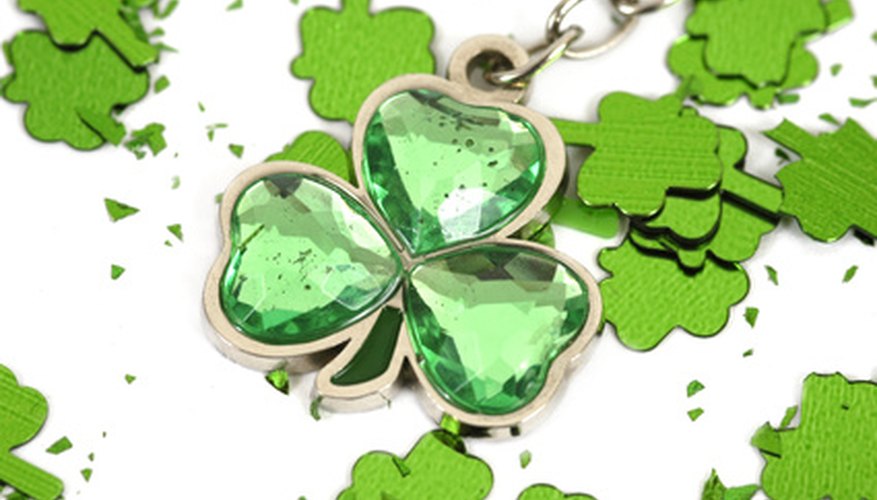Traditional Irish dress is a complicated subject. The country has no official national costume, so “Irish dress” may refer to anything from historical clothing to modern step-dance costumes. Taking the time to learn about the different types of clothes that can be considered traditionally Irish is a good idea for anyone interested in Irish heritage and culture.
Medieval and Renaissance
During the Medieval and Renaissance periods, Irish people were noted for wearing a very large linen shirt, called a leine, which was usually dyed yellow. Men wore this with a woollen jacket, breeches and a type of shaggy cloak called a mantle. Women wore a long dress, often laced up the front, and an unusual headdress composed of a roll of linen. Overgarments from this time often had sleeves that were little more than strips of fabric, to allow space for the larger sleeves of the leine.
- During the Medieval and Renaissance periods, Irish people were noted for wearing a very large linen shirt, called a leine, which was usually dyed yellow.
- Women wore a long dress, often laced up the front, and an unusual headdress composed of a roll of linen.
18th and 19th Centuries
The spread of English law and cultural pressures in the 18th and 19th centuries discouraged the Irish from wearing their traditional clothing. During some of this time period, these clothes were actually illegal. Irish men and women tended to dress similarly to the English during this period. There were a few national preferences. For instance, Irish women of the 19th century are often described wearing a red petticoat, and men tended to favour a style of coat called a swallowtail.
- The spread of English law and cultural pressures in the 18th and 19th centuries discouraged the Irish from wearing their traditional clothing.
Step Dancing
Irish step dancing is currently associated with kilts and elaborately embroidered dresses, which many people mistake for traditional clothing. However, heavily embroidered dance dresses date back only to the 1990s or so. According to Diochra, Irish dancers in the 19th century generally wore their Sunday best, with the men in knee breeches. It wasn't until the Gaelic Revival, around the turn of the 19th century, that people began to wear costumes specifically for dancing. Over the course of the 20th century, dance fashions changed several times.
- Irish step dancing is currently associated with kilts and elaborately embroidered dresses, which many people mistake for traditional clothing.
- According to Diochra, Irish dancers in the 19th century generally wore their Sunday best, with the men in knee breeches.
Kilts
Many people believe that the kilt is part of historical Irish dress, especially as it's often worn by male step dancers. However, according to Clannada na Gadalica, there's no evidence that historical Irish dress included a kilt. According to Reconstructing History, the Irish kilt may date from around 1900, when Irish Nationalist Padraic Pearse advised James O'Kelly to wear a kilt instead of trews, or knee breeches, which he felt looked undignified. Kilts became popular in the step-dance world in the 1930s and 1940s, which may have popularised them as Irish dress.
- Many people believe that the kilt is part of historical Irish dress, especially as it's often worn by male step dancers.
- According to Reconstructing History, the Irish kilt may date from around 1900, when Irish Nationalist Padraic Pearse advised James O'Kelly to wear a kilt instead of trews, or knee breeches, which he felt looked undignified.
Considerations
Because of the wide range of options which could be considered traditional Irish dress, it's a good idea to research before attending a festival or event where traditional clothing is appropriate. The leine and mantle of the Medieval period may be appropriate for a Renaissance fair or some Irish festivals, but would not be a good choice for a dance event or party. Likewise, a step-dance costume may look overly formal or anachronistic at an event where older fashions are preferred.
